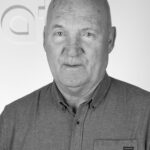The 2009 Agricultural Research Council will take place on 12 and 13 February. in the conference room of Icelandic Genetics (previous day, fh) and in the conference rooms on the 2nd floor of Hotel Saga.
The session will offer a variety of presentations and Matís employees will deliver a number of them and make other contributions, such as leaflets and more.
Information about the conference from its organizers:
On behalf of our institutions, we invite you to the 2009 Agricultural Research Council, which will be held according to the attached agenda on 12 and 13 February. in the conference room of Icelandic Genetics (previous day, fh) and in the conference rooms on the 2nd floor of Hotel Saga.
Participants in the Research Conference who wish to stay at Hótel Saga or Hótel Íslandi are offered the following terms:
Bed and Breakfast:
Hotel Saga
Single room - ISK 8,000
Double room - ISK 9,000
Park Inn
Single room - ISK 7,000
Double room - ISK 8,000
Accommodation must be booked well in advance and it must be mentioned that this is a Research Conference. Order phone is 525 9900.
Conference fee is ISK 12,000 and includes meeting materials and coffee / tea.
The conference proceedings cost ISK 4,000 in bulk. Speakers and moderators are exempt from the fee. A draft agenda for the meeting is attached.
This time, participants in the Academic Assembly are given the opportunity to buy lunch on both days of the session at Hotel Saga. Participants are asked to register for lunch as soon as they register for the session.
Please note that registration takes place on the website http://www.bondi.is/ and also in the house Icelandic Genetics, Sturlugata 8, Thursday 12 February at 8:15. The program starts punctually at 9:00.
The agenda of the session can be found on the website http://www.bondi.is/ and will be updated regularly.











